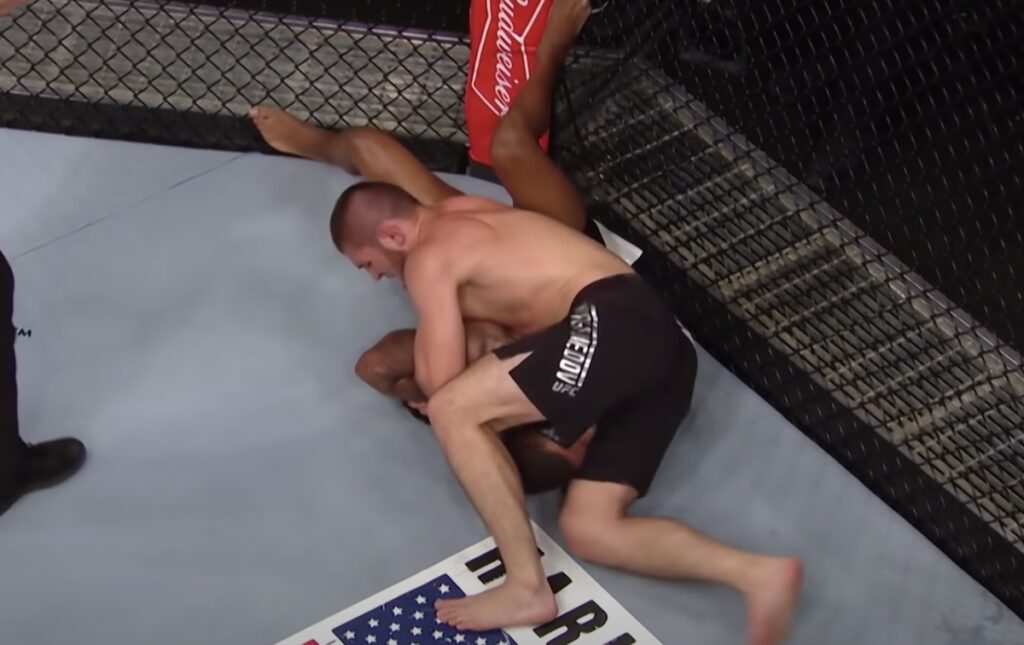Kimura Lock: BJJ Submission Explained

If you were forced to choose only one submission when grappling, the kimura lock may be the best one. The kimura lock may be the most diverse submission in all of Jiu Jitsu.
You can land it from almost anywhere from nearly any position and it is incredibly powerful. Even just being able to get a kimura grip can work to your advantage.
Taking a kimura grip can even allow you to hit sweeps and hit takedowns. This is why grapplers have built entire games around this sub including the effective kimura trap system.
It is a phenomenal submission and we’re going to tell you everything about the kimura. Detailing its history, how it works, and a few of the various techniques involving this submission.

When was the kimura invented?
Before Jiu Jitsu was ever invented, the kimura lock was used within submission wrestling systems like catch as catch can. Within these submission wrestling systems, they referred to this submission as a double wrist lock.
Judo also used this submission and called it the ude-garami. In BJJ, the move wasn’t used or popularized until after the famous bout between Masahiko Kimura and Hélio Gracie.
When Kimura was visiting Brazil, he was challenged to a grappling match by Hélio. After the two agreed to terms, they had the match in front of thousands of people.
Kimura dominated the smaller Gracie in the match and ended by locking in the ude-garami. Gracie refused to tap and got his arm broken twice.
As an homage and respect to Kimura, Jiu Jitsu practitioners started referring to the move as the kimura lock.
How does the kimura lock work?
The mechanics of how the kimura lock work are actually very simple. It is a basic lever system, where immense pressure is put on the opponent’s shoulder and elbow joint.
Grabbing hold of the opponent’s wrist, while connecting your wrists together forcing their arm behind their back. Once the kimura gets locked in, the opponent only has moments to tap or get their arm broken.
Basic kimura from guard
You first learn how to do the kimura as a beginner within your first few Jiu Jitsu lessons. Generally the kimura from guard being the most basic and simple variation.
You start by placing the opponent’s hand on the mat to make the opening for the sub. First you grab the opponent’s wrist close to their hand.
It’s fine to use a normal grip, but the strongest grip to use is probably a 5 finger grip. But as a beginner don’t worry too much about grips and just focus on the movements.
Then you do a side ab crunch and sit up towards the arm you’re controlling. Loop your free hand over the opponent’s shoulder and go through their arm to lock your hands together.
Now for the finish push the opponent’s arm behind their back as you fall to your back. Be sure to scoot your hips out a little to give yourself more space to crank the arm.
Kimura lock from side control
A kimura lock from side control is a classic go to submission for many grapplers. First you want to be mindful of weight placement. Keep your weight centered on top of your opponent, so not to worry about getting swept.
After you make sure your weight is centered take wrist control on the opponent’s far arm. Then take your under that arm and grab your wrist connecting your hands together.
For the steps to finish, you have two options. The first option is to pull the opponent onto their side and put their arm behind their back.
But sometimes for tough opponents that won’t work. So you may need to pull them up and step over their head for better control over them. To finish, bring their elbow to your chest and then crank their arm toward their back.
Near side arm kimura from side control
A different variation of a kimura from side control involves attacking their arm closest to you. It can open up if they turn away and expose their arm.
When they do this quickly take your grip. From here you have a variety of different options. You can either take the kimura in a few different ways and even take their back or grab an armbar.
Kimura From Mount
It isn’t the most used submission from mount, but you can definitely hit a kimura when you have mount.
Take a kimura grip on the arm you want to attack and drop your head on the same side. It’s kind of hard to get the angle to finish the kimura from here, so you’ll probably need to roll. Bring your far leg over the opponent’s head and do a front roll to your back and get the finish.
Kimura lock from standing
There’s a great kimura technique from standing when the opponent has back control made famous by the legendary Kazushi Sakuraba.
When the opponent is hugging your back from standing, you have to attack the top arm and get kimura control. Be sure to drop your weight down or you risk your opponent suplexing you.
After you break your opponent’s grip, turn into them and do a back roll, while keeping the kimura grip. You’ll end up on top in side control, so it’ll be your choice for how you want ro finish it.
The power kimura
When you’re going against a really strong opponent, there is another grip you can go to that’s really powerful. Some call this the power kimura.
The power kimura is basically a rear naked choke grip on the opponent’s arm. How you do it is slide your grip hand to the opponent’s elbow and grab your bicep with the other.
This move is best used when you’re in side control and isolated one of the opponent’s arms.
Half Guard Kimura Trap Series
There have been numerous systems built around the kimura and one of the most popular is the kimura trap. Here are two kimura trap techniques from half guard.
The first is the sweep from half guard. When you have a knee shield from half guard take a kimura grip and press it towards the opponent’s hip. Then you bait them to pass by taking your knee shield away.
All you do is push their arm into their hip, rotate, and sweep them over on their back. Very simple.
Next is if they don’t take the bait to pass. When they don’t pass, swing your legs to north/south. Use that momentum to place your foot on the opponent’s hip. This gives you a perfect angle to take a kimura.
Tips for doing the kimura lock
The kimura lock is very simple to do, but there are some small details you need to remember. If one of these details is missing it could lead to you losing the sub, so remember these tips.
- Side Ab Crunch: As you sit up to lock your hands together be sure to remember to do a side crunch. Sitting straight up limits your space to do the move and may impede you from locking your hands together. Doing a side crunch will give you the space you need to lock your hands and get the kimura.
- Arm Over The Shoulder: It is very important to loop your arm over the opponent’s shoulder. For the kimura to work successfully, you need to have control of the opponent’s wrist, elbow, and shoulder.
- Scoot Your Hips Out: After you get your kimura grip and are falling back be sure to scoot your hips out. This will ensure you have enough space and get angle to get a good torque on their arm.
- Grab Near The Opponent’s Hand: As you go to get your grips make sure you grab the opponent’s wrist closer toward their hand. If you try grabbing closer to their forearm, you don’t have much control and are less likely to get the kimura.
- Don’t Lean Too Far Over: When you’re going for a kimura from side control make sure you don’t lean your weight too far forward. The opponent could easily sweep you, so try to stay on the centerline.
- Bring Their Arm Into You: Before you put the opponent’s arm behind their back, you have to bring their arm to your chest. This will ensure the kimura is tight and you have good control over the arm.
- Attack The Top Arm: When the opponent has your back and you go for the Sakuraba style rolling kimura grab the top arm. You always attack the top arm when doing this move or it won’t work.
- Use Your Whole Body: A kimura is not just using 2 arms against 1. Use your whole body to attack their arm and you’ll be way more successful getting the sub.






